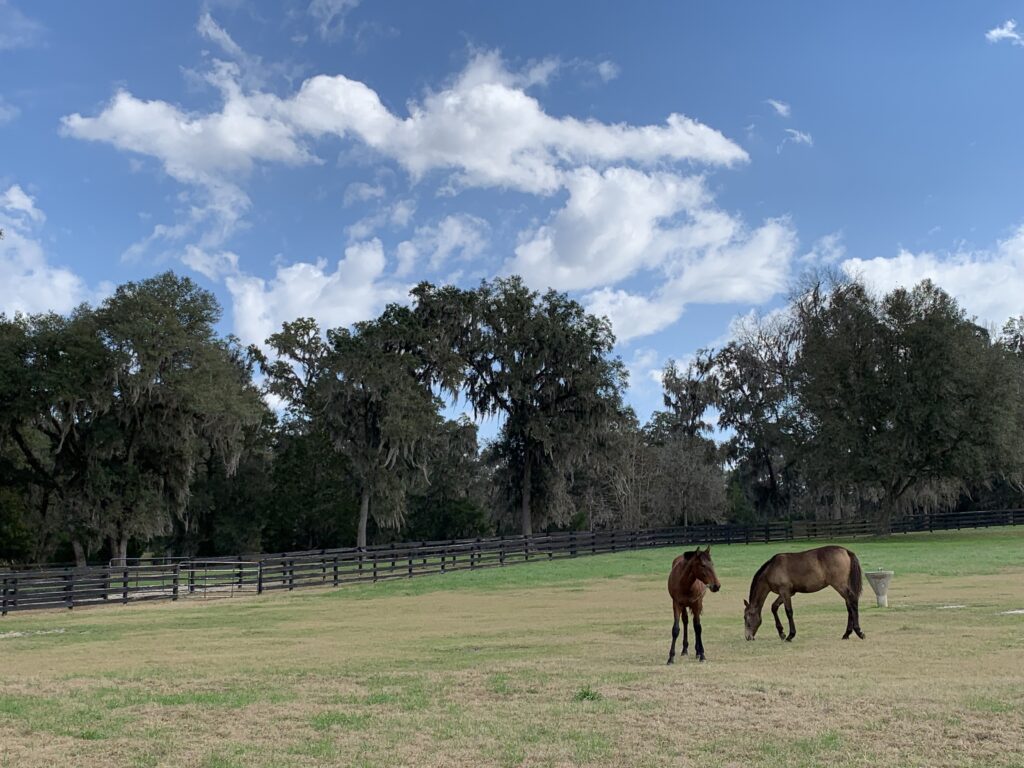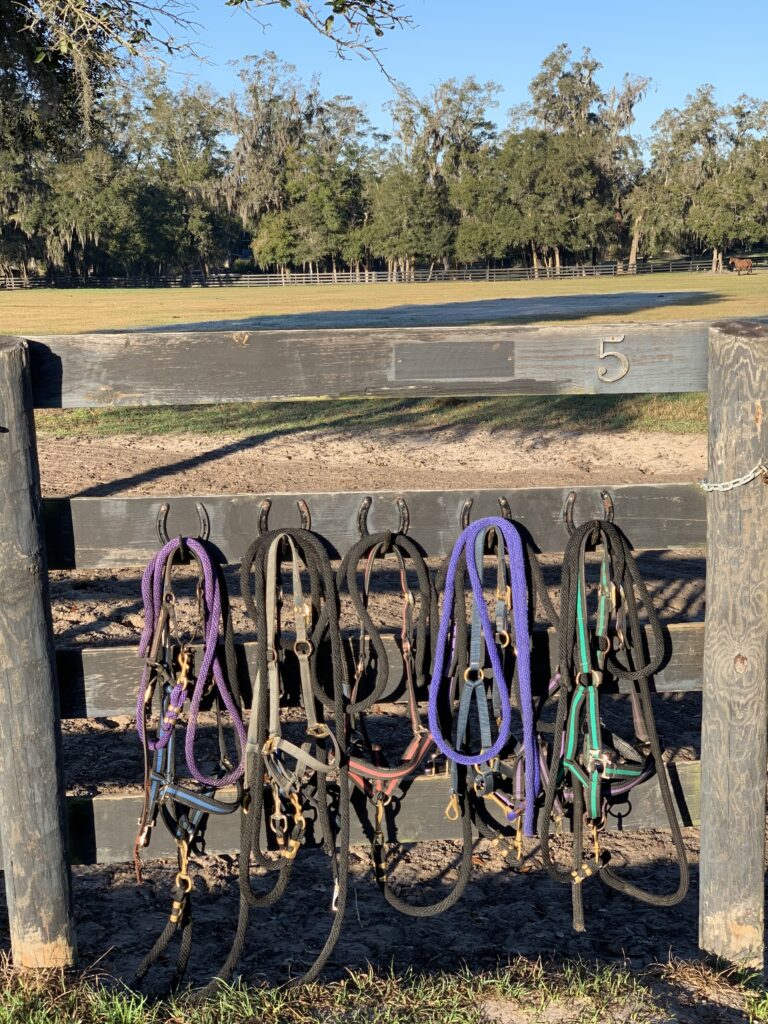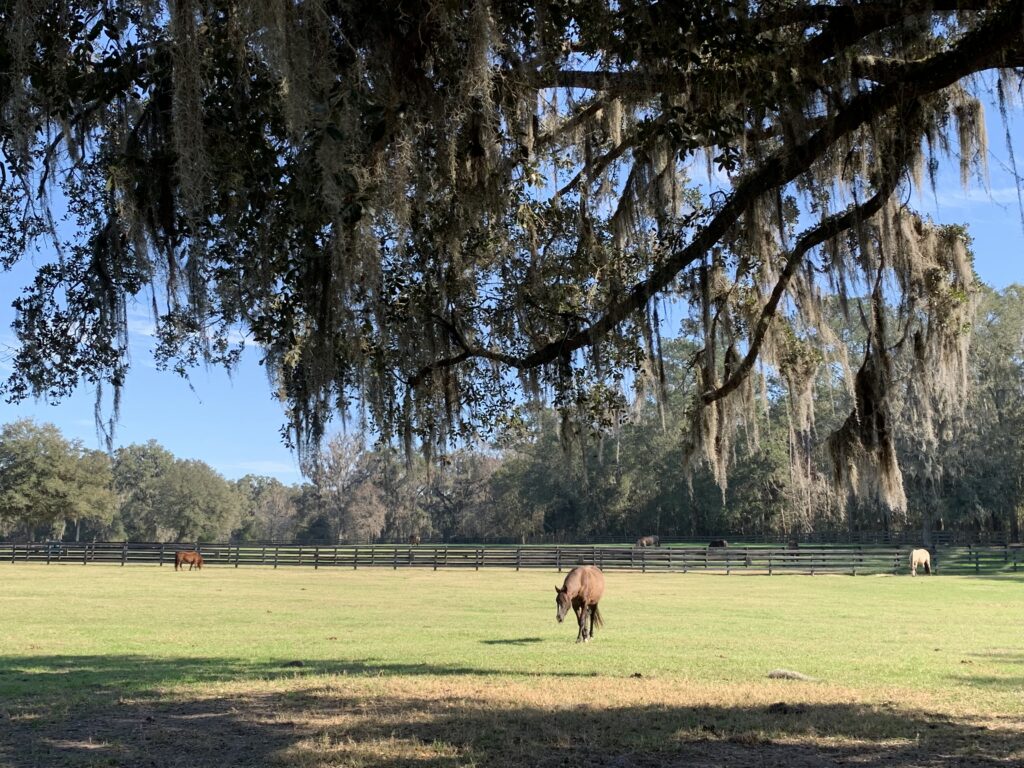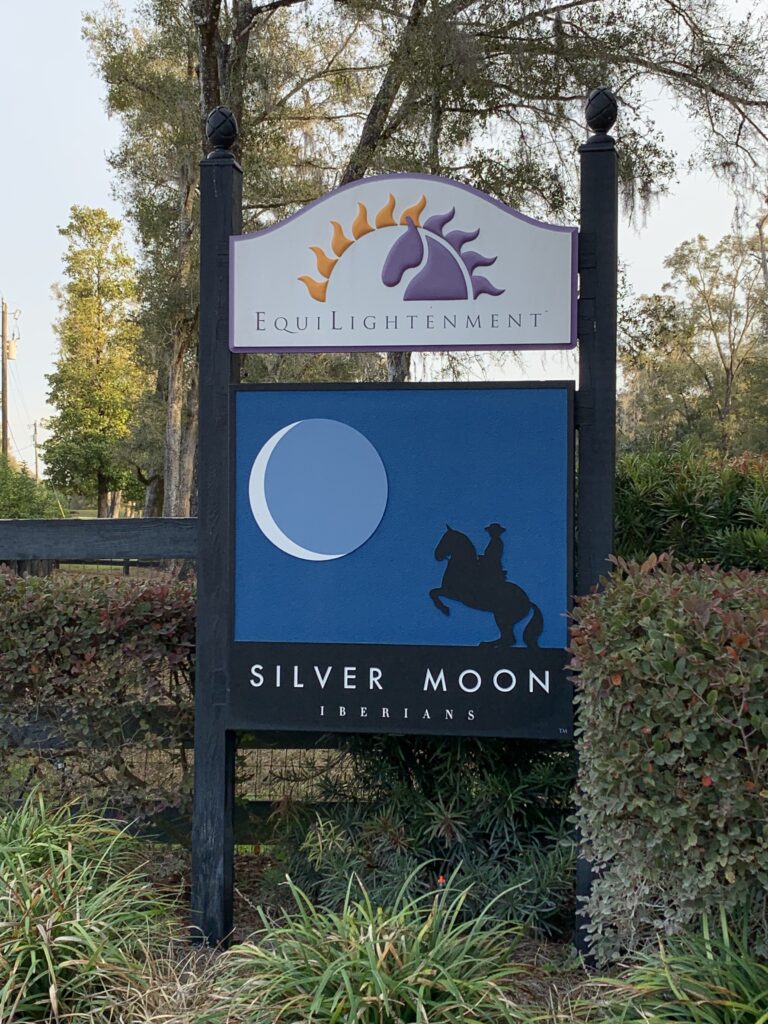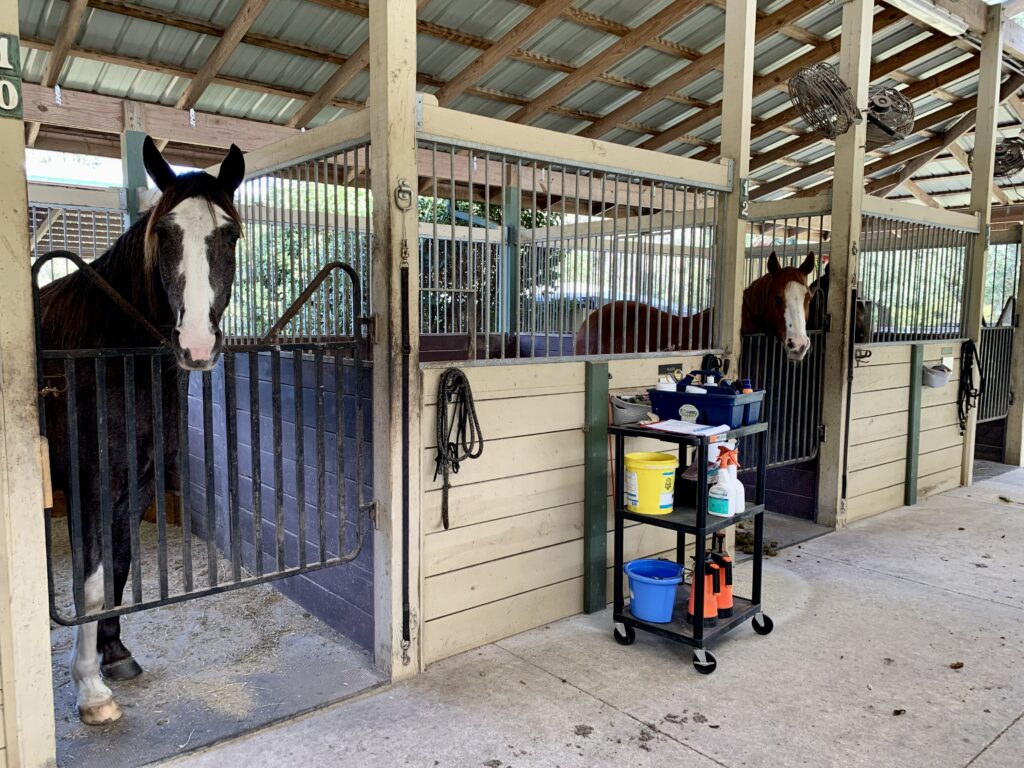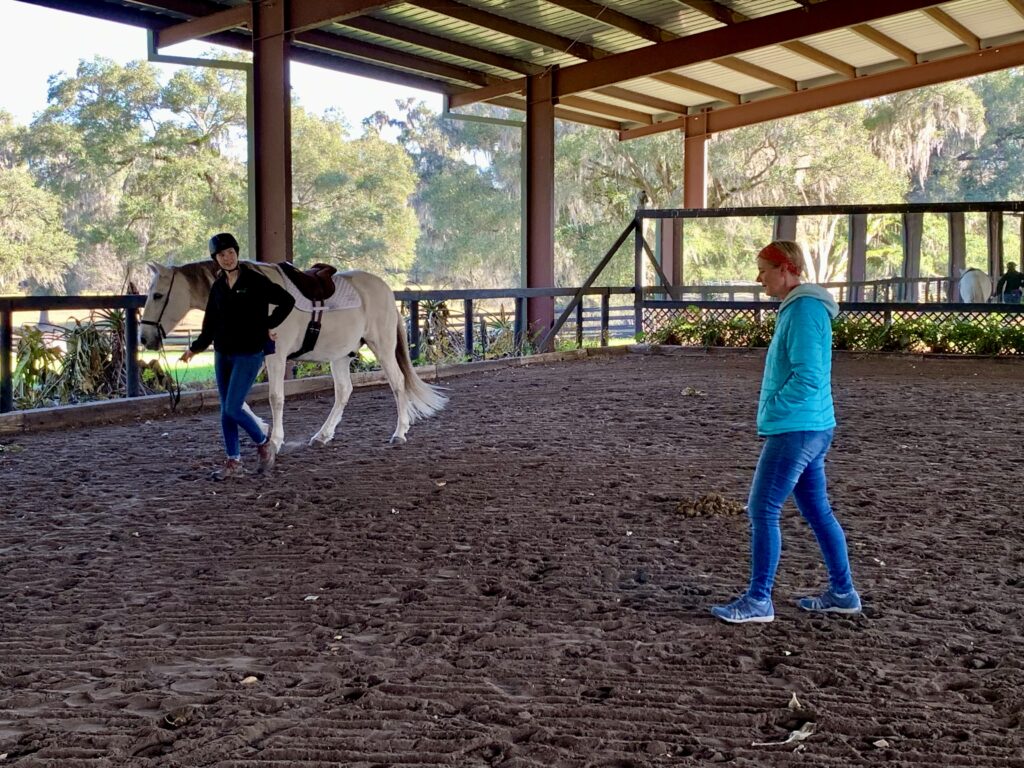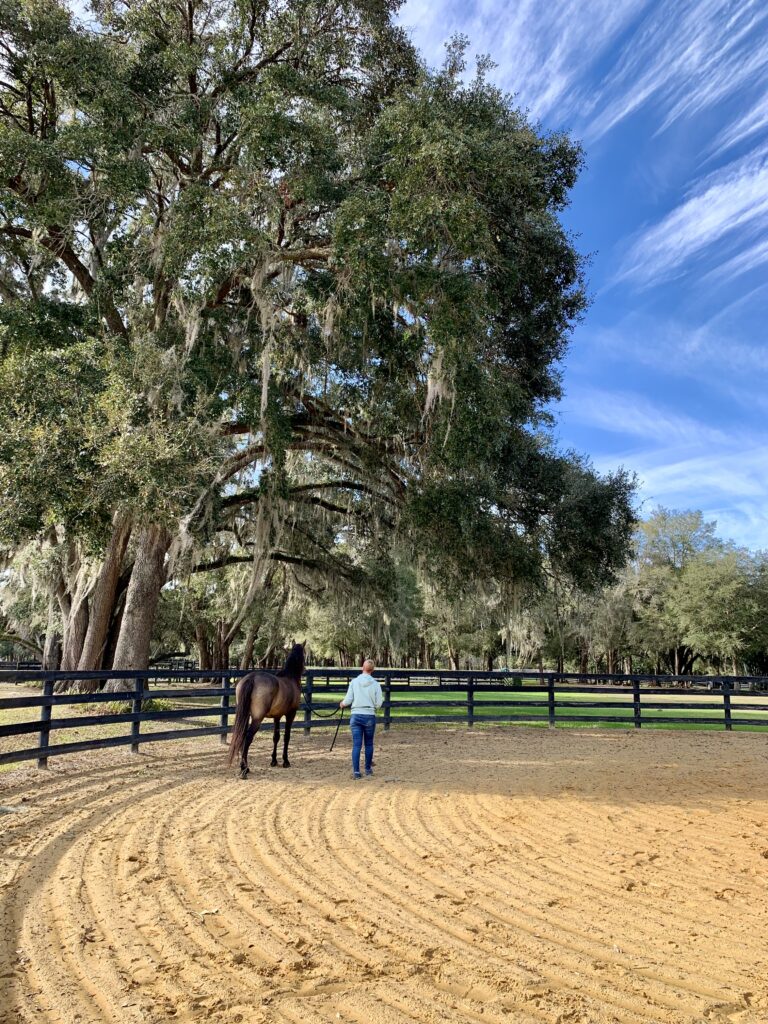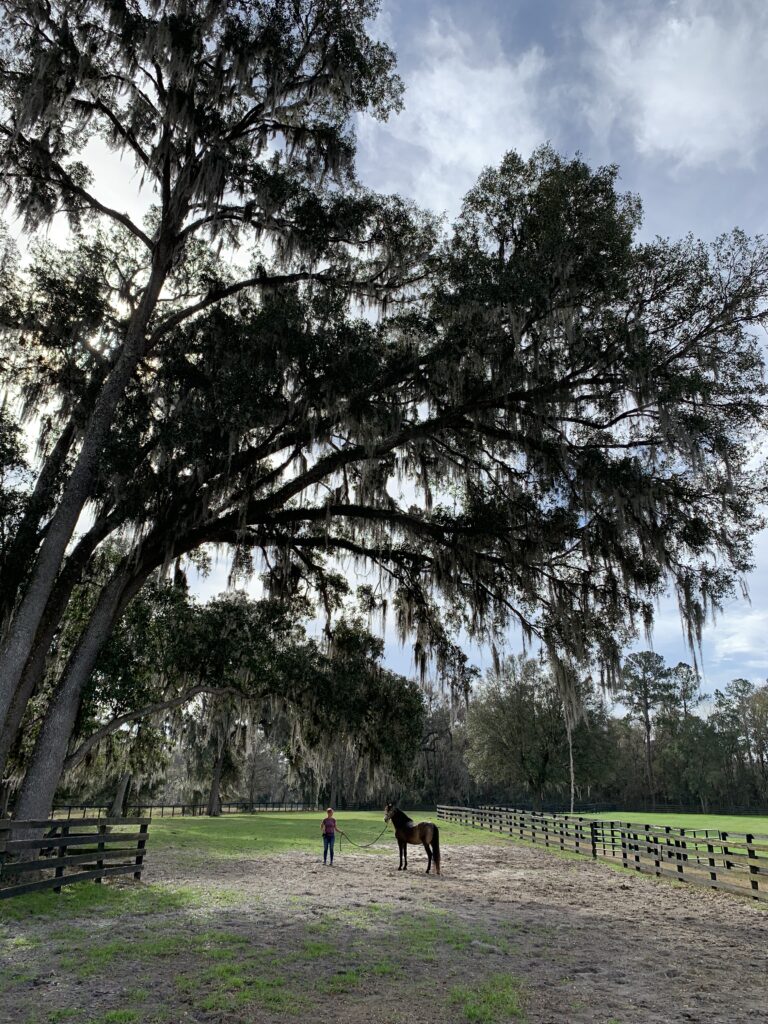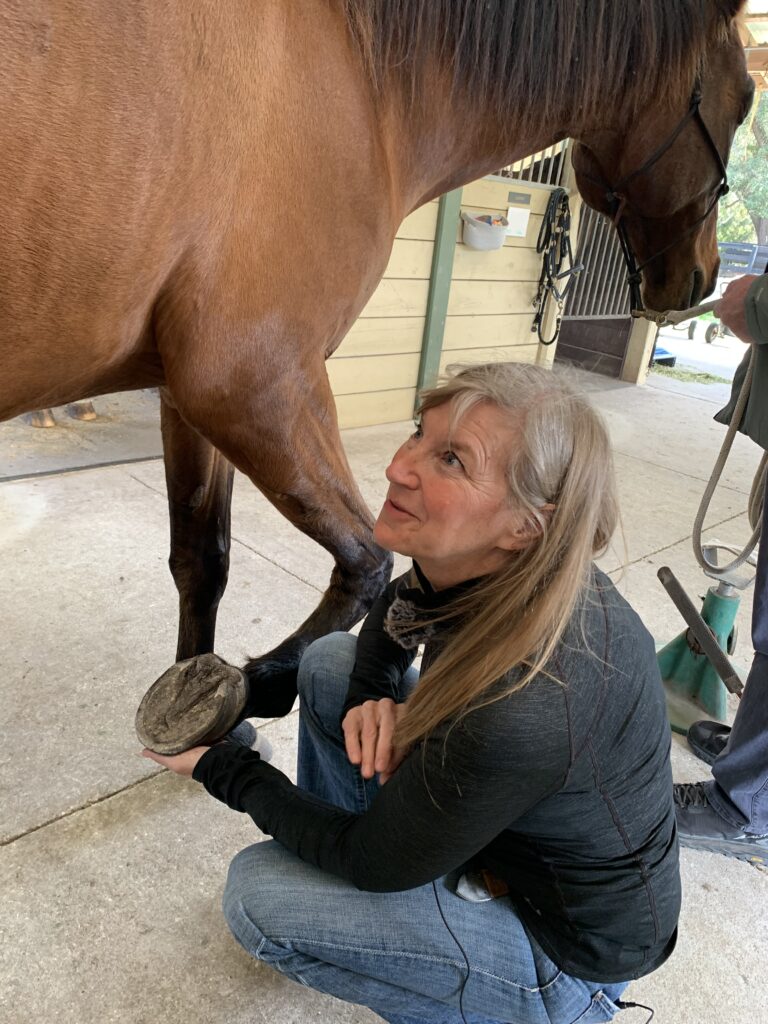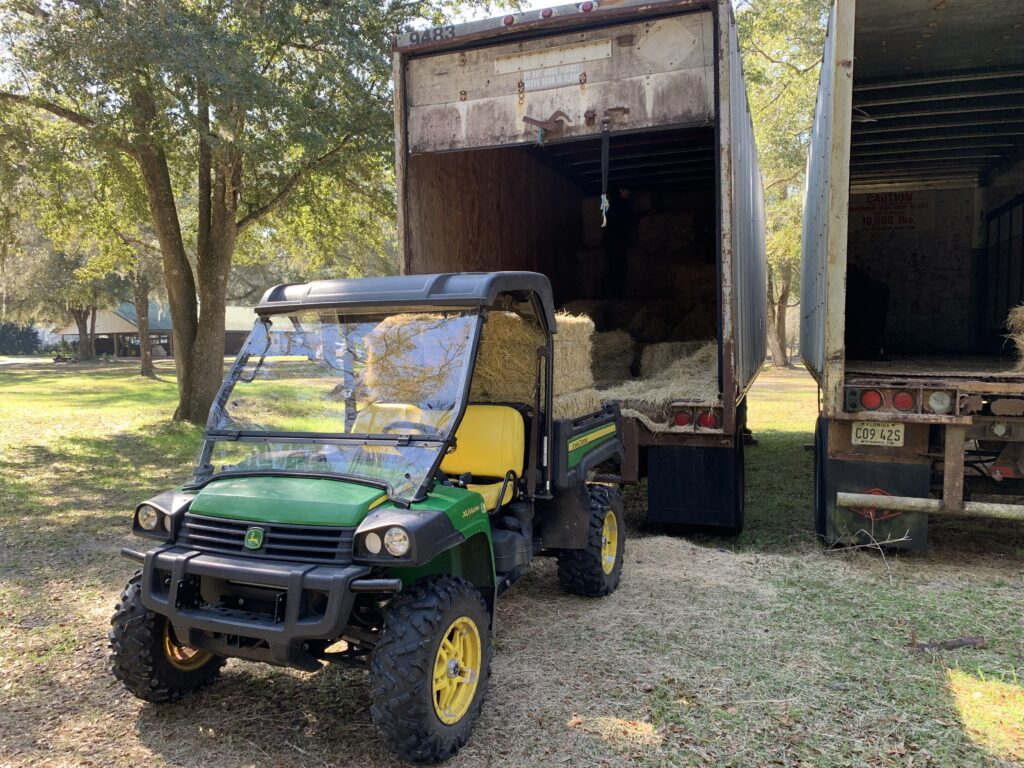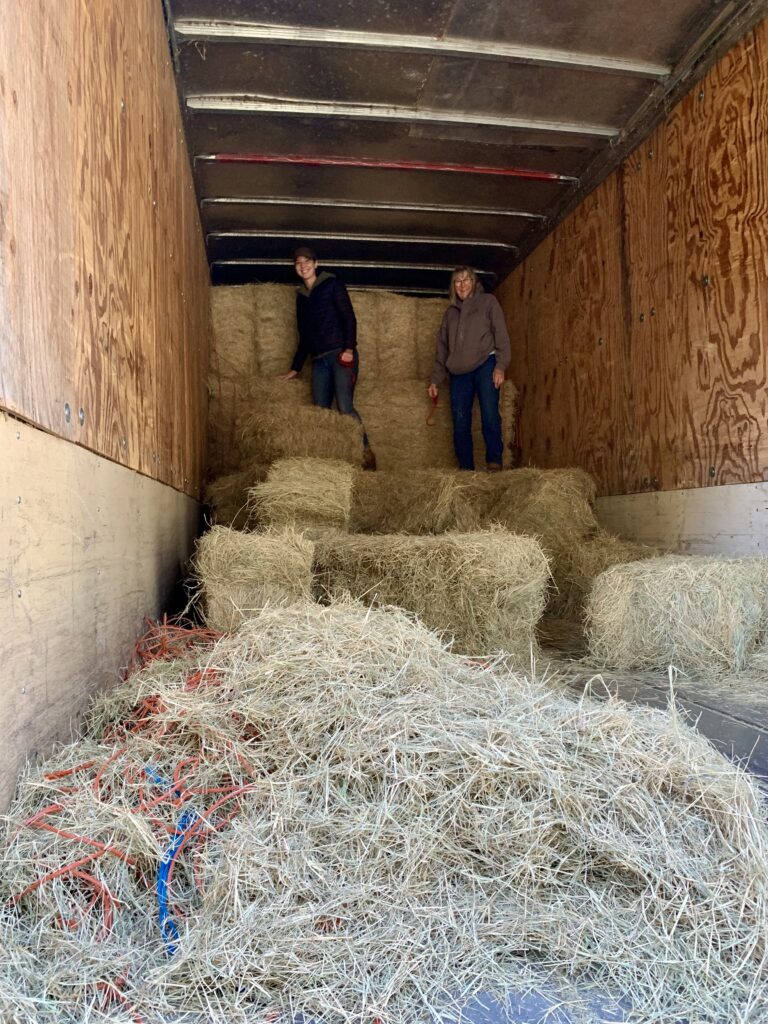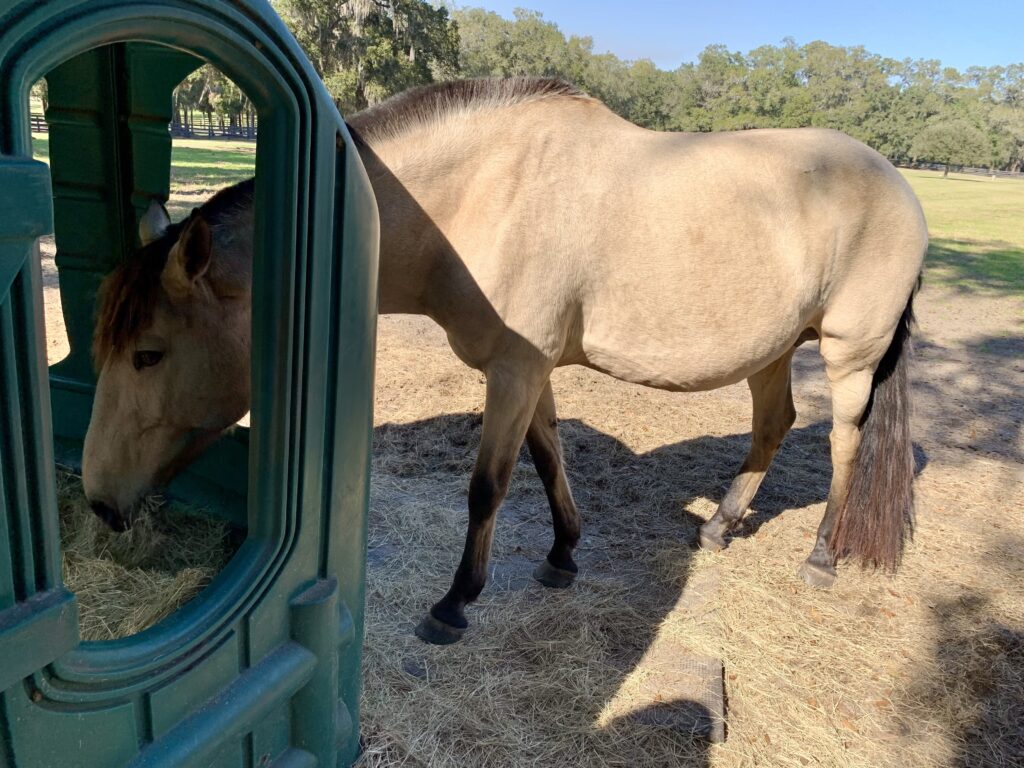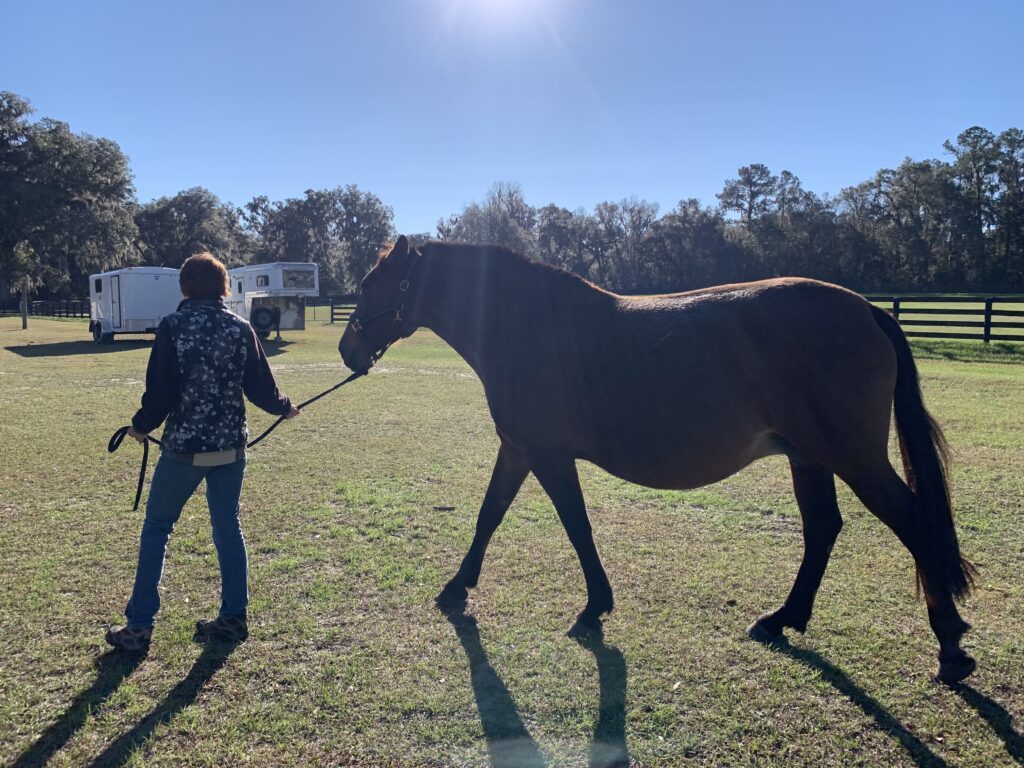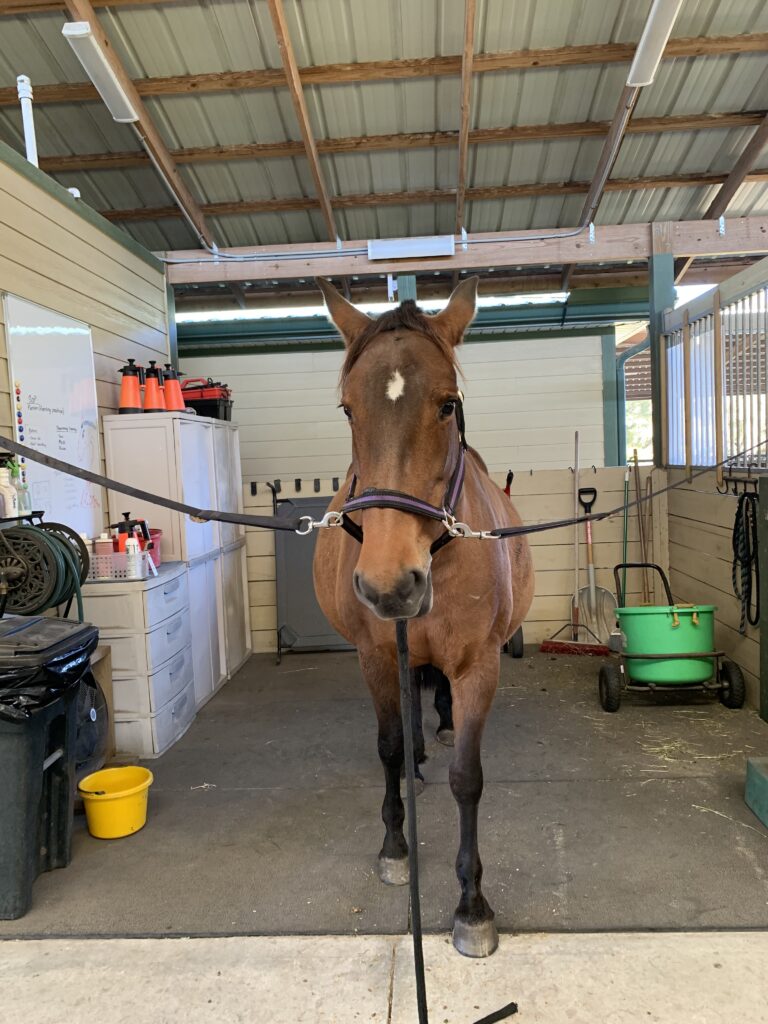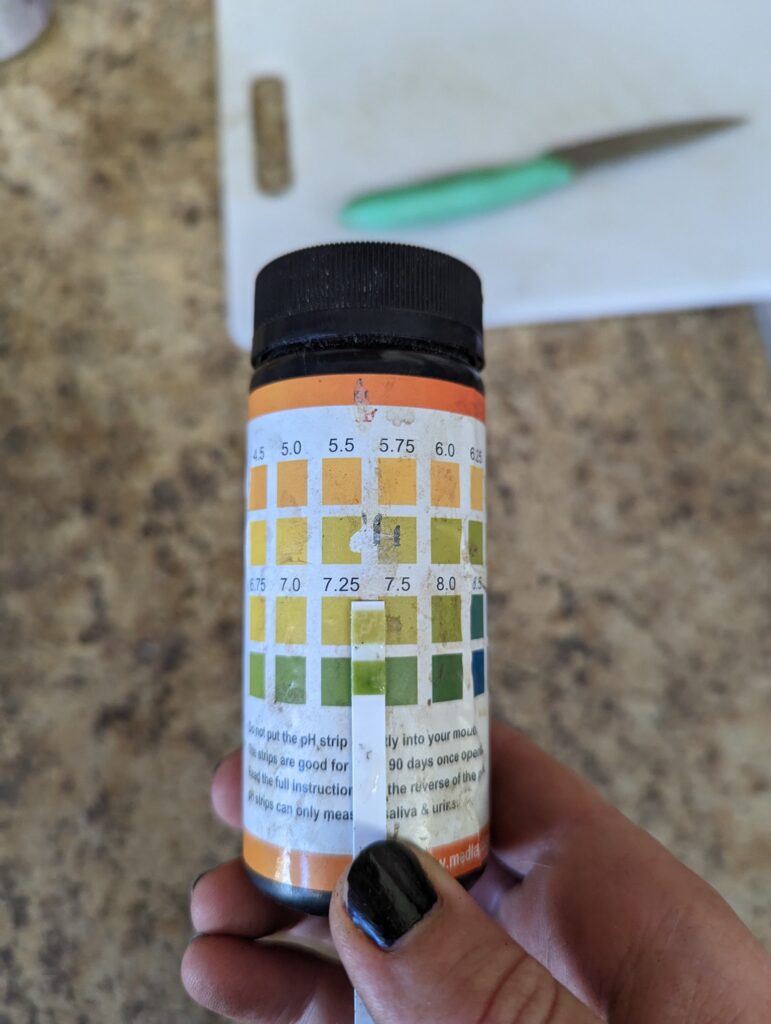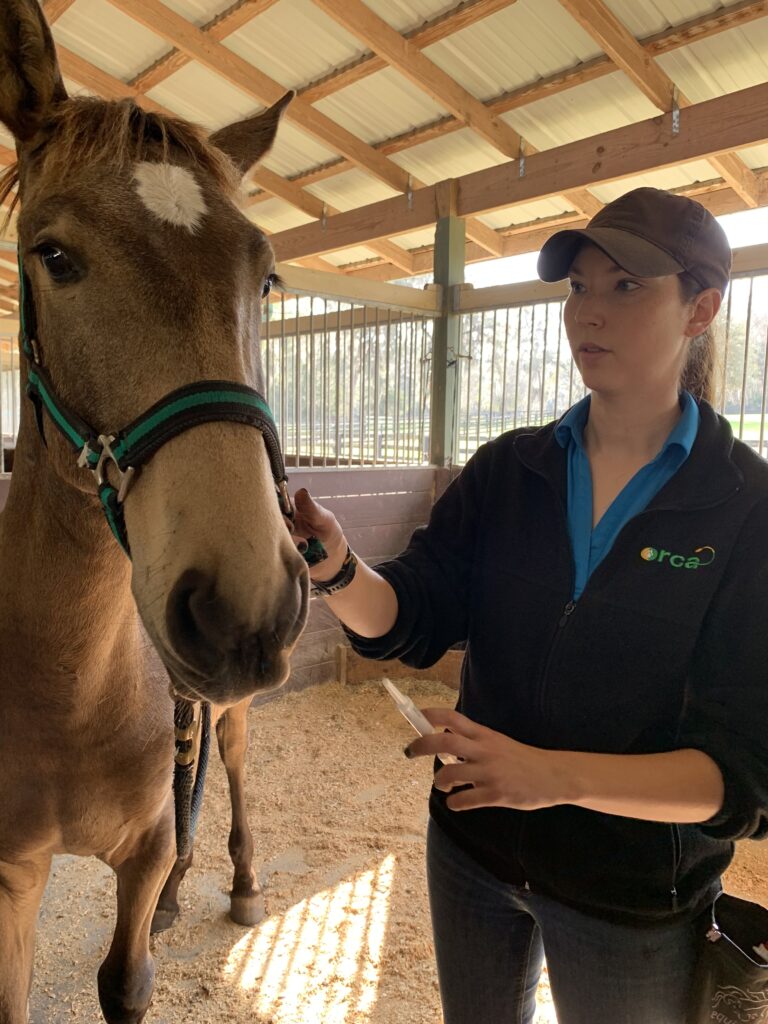At EquiLightenment, education is part of the ethos. Whether you’re a horse, an intern, or an accomplished equestrian, you are likely to learn something new every day.
As an intern, my whole job is to learn. Working with Sharon and Jess, I continue to relish experiences that pop out of my textbooks and into real life. What I hadn’t expected was how often teachable moments arise throughout the day and how flexibly the two trainers drop everything to (a) teach me something, (b) teach a horse something, or (c) learn something new themselves.
For example, last Wednesday we brought Crescente and her 9-day-old baby, Tenebrus, in from the pasture and into their stall. As we admired them, Jess bent down to give the foal a little scratch, and he took a step toward her. “Hey, let’s just introduce the marker right now,” Sharon said.
It felt like a major milestone as Jess practiced positive reinforcement training on Tenebrus for the first time. She continued scratching his chest for a few seconds and then took a step back. As soon as Tenebrus started to move toward her, she made a clicking sound (the “marker”) and then gave him a scratch. The click acts as a bridge between the desired behavior (moving forward) and the reinforcer (a scratch on the chest).
A few days later, Sharon took a break during a very busy day for a short session with Tenebrus in the field. She introduced the concept of backing up on command, and she also presented a little halter to begin desensitizing him for future use.
During my days at the farm, Jess and I use a checklist to care for the horses. She frequently stops what she’s doing to teach me a new skill or concept, such as mixing feed for the horses, treating wounds, and targeting specific hoof care needs.
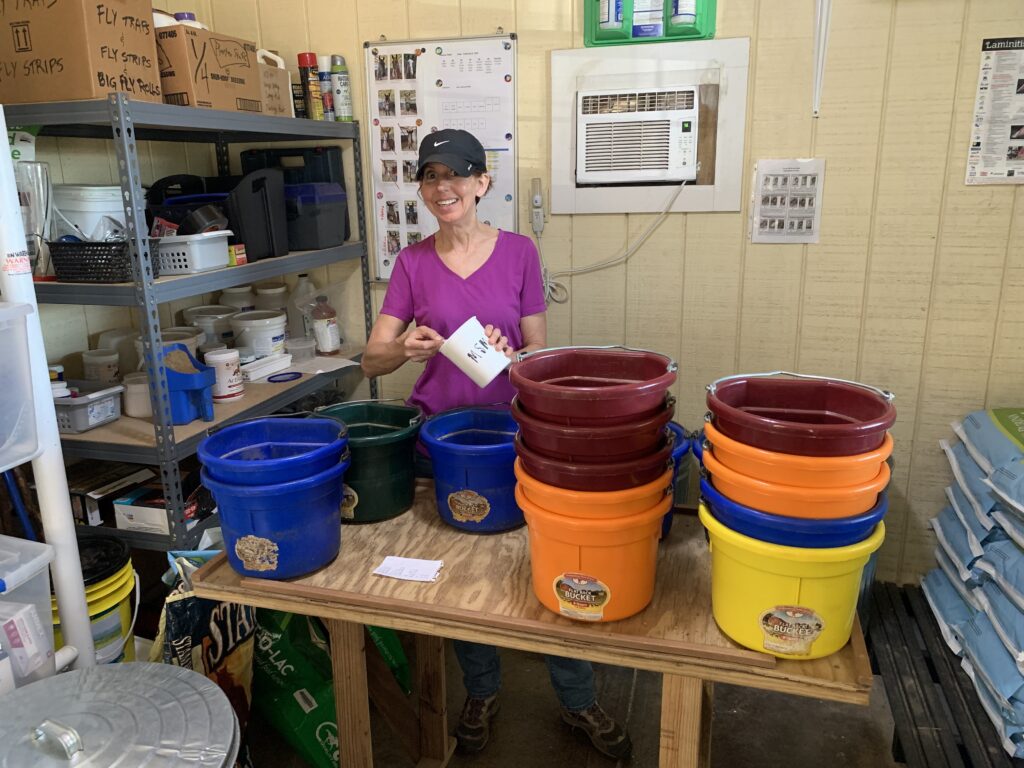
Tenebrus and I are the newbies here, but Jess and Sharon are also eager learners. When equestrian coach Jon La Force visited the farm recently, both women raved about how much he taught them. It was inspiring to see Sharon in the arena, lunging her stallion, Ladino, as Jon kept up a steady stream of advice. She and Jess continue to refer to his training as they work with the horses, and it’s a refreshing reminder that no matter how much of an expert you are, there’s always something new to learn.
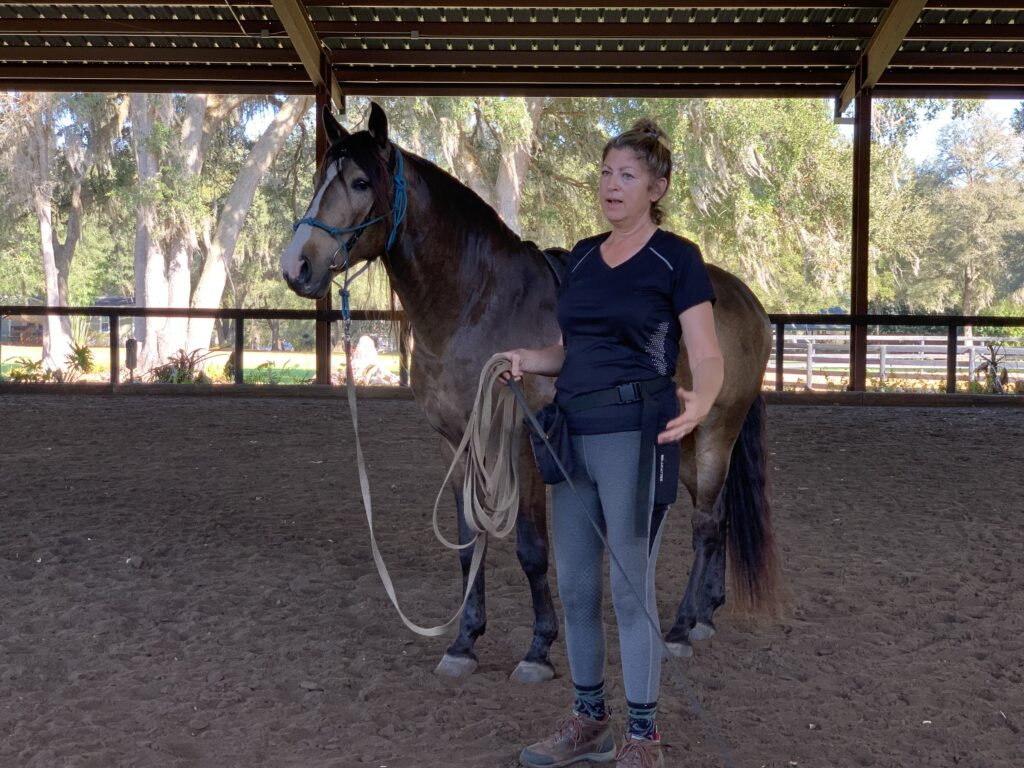
Another teachable moment happened the other day after Sharon demonstrated some training strategies with her colt, Romano. She had walked him to her trail course, a sort of playground with a variety of obstacles, where he practiced crossing a bridge, stepping up and down a steep slope, and keeping calm while moving through a gate. A guest at the farm and I watched as Sharon explained what she was doing. After putting Romano back in the pasture, we headed to the barn while discussing positive reinforcement training.
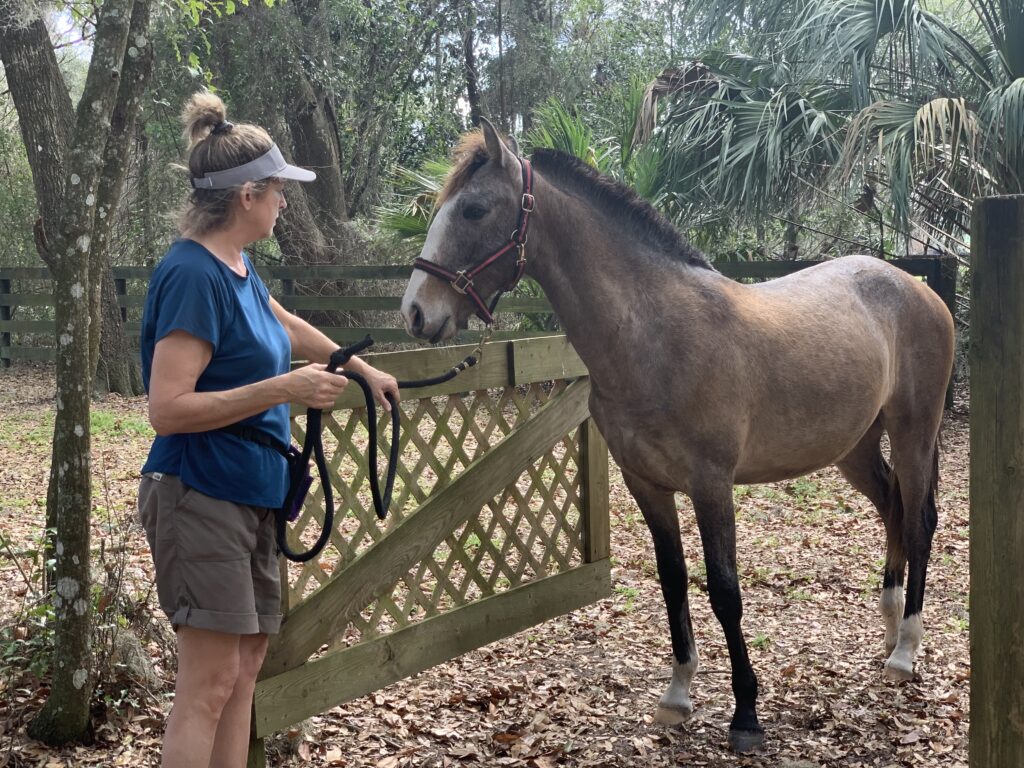
It was a casual chat until Sharon realized we had a misconception. She paused, leaned over to draw a Punnet square in the sand, and proceeded to use clear analogies to explain the four domains of operant conditioning: positive reinforcement, negative reinforcement, positive punishment, and negative punishment. I had learned this stuff in my Equine Behavior and Psychology class, but Sharon’s explanation was so much clearer. Her guest and I both felt enlightened.
About halfway through my internship, I feel grateful for teachable moments and the commitment to education that permeates this experience. What will I learn tomorrow? I can hardly wait to find out.

